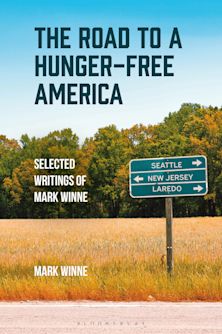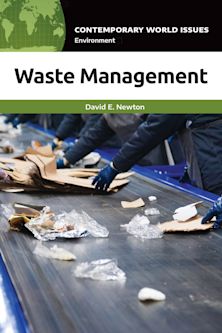- Home
- ACADEMIC
- Politics & International Relations
- Public Management, Administration and Policy
- Urban Communication
Urban Communication
Production, Text, Context
Timothy A. Gibson (Author) , Mark Lowes (Author) , Caroline Andrew (Contributor) , Asef Bayat (Contributor) , Kevin Fox Gotham (Contributor) , John Hannigan (Contributor) , Jeannie Haubert (Contributor) , Carey L. Higgins (Contributor) , Andrew Kincaid (Contributor) , Vincent Mosco (Contributor) , Gerald Sussman (Contributor) , Paul Tranter (Contributor)
Urban Communication
Production, Text, Context
Timothy A. Gibson (Author) , Mark Lowes (Author) , Caroline Andrew (Contributor) , Asef Bayat (Contributor) , Kevin Fox Gotham (Contributor) , John Hannigan (Contributor) , Jeannie Haubert (Contributor) , Carey L. Higgins (Contributor) , Andrew Kincaid (Contributor) , Vincent Mosco (Contributor) , Gerald Sussman (Contributor) , Paul Tranter (Contributor)
You must sign in to add this item to your wishlist. Please sign in or create an account
Description
City leaders now confront a global competition for economic investment. Not surprisingly, urban elites have cast about for strategies that promise to secure for their cities a share of this future of global economic growth. What is remarkable, however, is that so many of these urban growth strategies are largely symbolic in nature. We see, for example, city leaders competing madly for the Olympics so that they can broadcast spectacular urban vistas to global television audiences. We see officials pouring public funds into tourist amenities, not so much for their tangible economic value, but rather because they help cultivate an image of vitality and renewal. We see, in short, a rich trade in images about 'the city,' usually for strategic economic reasons. But how are these image-building strategies produced in the crucible of local political struggle? How are the local politics of urban redevelopment intertwined with the global politics of circulating bold images of urban vitality? Who, if anyone, benefits from public investment in such 'image-building' activities? Urban Communication brings together a community of scholars from communication, cultural studies, and urban sociology to explore the symbolic dimensions of contemporary city-building, drawing on case studies from around the world.
Table of Contents
Part 2 I The City in Production
Chapter 3 1 Neoliberal Revitalization: Prison Building, Casinos, and Tourism in Louisiana
Chapter 4 2 Internet Politics the Singapore Way
Chapter 5 3 A Neo-Bohemian Rhapsody: Cultural Vibrancy and Controlled Edge as Urban Development Tools in the "New Creative Economy"
Chapter 6 4 City Living, DC Style: The Political-Economic Limits of Urban Branding Campaigns
Part 7 II The City as Text
Chapter 8 5 "They Stand for All the Things I Hate": Georgian Architecture and Cultural Memory in Contemporary Dublin
Chapter 9 6 Trying To Be World-Class: Ottawa and the Presentation of Self
Chapter 10 7 Plugola: News for Profit, Entertainment, and Network Consolidation
Part 11 III The City in Context
Chapter 12 8 Communicating Urban Values Through Megasport Events: The Case of Australia's " High performance" Cities
Chapter 13 9 From "Dangerous Classes" to "Quiet Rebels": The Politics of the Subaltern in the Global South
Chapter 14 10 The Empire at Ground Zero
Chapter 15 Bibliography
Product details
| Published | 05 Oct 2006 |
|---|---|
| Format | Ebook (Epub & Mobi) |
| Edition | 1st |
| Extent | 224 |
| ISBN | 9781461705819 |
| Imprint | Rowman & Littlefield Publishers |
| Series | Critical Media Studies: Institutions, Politics, and Culture |
| Publisher | Bloomsbury Publishing |
About the contributors
Reviews
-
This collection is a unique blend of analyses by urban scholars and specialists in communication. The contributors remind us that the narrative construction of the city is a constantly changing process with powerful consequences.
Dennis R. Judd, University of Illinois, Chicago; coauthor, City Politics: The Political Economy of Urban America; coeditor, American Urban Polit
-
The city is a dynamic space and place in transition, shaped and reshaped by the convergence of communication technology. Urban Communication makes a significant contribution to our understanding of the dynamics and importance of the city. It is a critical time for the city as the economic reconfiguration of the urban/suburban landscape occurs. It is a crucial time as the needs and values of a population in flux are being reshaped. The challenge is to design and integrate the contemporary city keeping in mind both economic vitality and quality of life issues. Gibson and Lowes's anthology signifies another step in the maturation of urban communication as a discipline.
Gary Gumpert, president, the Urban Communication Foundation
-
Recommended.
Choice Reviews
-
Bridging communication studies and urban studies from a critical studies approach takes the growing field of urban communication in new directions. In so doing this volume addresses issues of the relationship between the 'sense of place' and 'image of place.' What do communication scholars have to bring to the table in understanding and improving the urban environment? This volume shows the answer to that question?a great deal! The study of urban communication is based on the notion that cities are inherently places of and products of communication. The city has long been ignored, or at best marginalized, in communication studies. There are fundamental questions of communication facing cities, suburbs, and exurbs today. This volume makes asignificant contribution, inviting communication scholars to consider how their own research can inform our understanding of urban dilemmas. Further, it invites community leaders to consider the relevance and value of communication research..
Susan Drucker, Hofstra University; co-editor, Voices in the Street: Explorations in Gender, Media, and Public Space
-
Bridging communication studies and urban studies from a critical studies approach takes the growing field of urban communication in new directions. In so doing this volume addresses issues of the relationship between the 'sense of place' and 'image of place.' What do communication scholars have to bring to the table in understanding and improving the urban environment? This volume shows the answer to that question-a great deal! The study of urban communication is based on the notion that cities are inherently places of and products of communication. The city has long been ignored, or at best marginalized, in communication studies. There are fundamental questions of communication facing cities, suburbs, and exurbs today. This volume makes a significant contribution, inviting communication scholars to consider how their own research can inform our understanding of urban dilemmas. Further, it invites community leaders to consider the relevance and value of communication research.
Susan Drucker, Hofstra University; co-editor, Voices in the Street: Explorations in Gender, Media, and Public Space



































